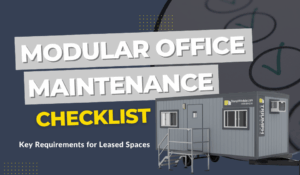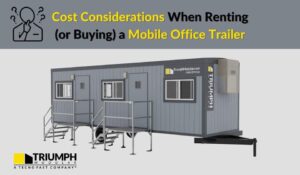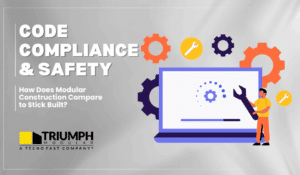No matter what industry your business is in, one thing remains true.
Disaster can strike at any time.
The question is: what can you do to prepare and ensure that your business can continue beyond disaster?
Preparation is key in managing disaster relief efforts — here are some tips to help you create a plan.
Assess Your Risks
The first step that any business should take in preparing for disaster is to assess the risks associated with your area.
What disasters have occurred in the past? Is your area prone to flooding? Adverse weather events? Earthquakes? Even if your area isn’t prone to natural disasters, are you prepared for fire or other events?
These are questions that you’ll need to answer to help you create a proper plan.
From there, you’ll want to figure out your facility’s capability of withstanding these events. For example, extra precautions will need to be taken if you’re close to floodplains.
Everything to do with disaster response preparation starts with assessing your risks. You won’t be able to properly plan without taking this step.
Make a Disaster Response Plan
One of the most crucial aspects of disaster preparedness is having a well-thought-out disaster response plan.
You can begin creating your plan by making a list of emergency contacts, including local authorities, family members, and neighbors — clear communication during a crisis is essential.
You’ll also want to develop an evacuation plan with escape routes, designated meeting points, and a checklist of items to bring in case of evacuation.
Finally, don’t forget about emergency kits — emphasize the importance of having an emergency kit with essential supplies like water, food, first-aid materials, and important documents.
Back Up & Secure Important Data
Businesses rely heavily on data — for this reason, data protection is a critical aspect of disaster preparedness.
For disaster relief, you’ll want to regularly back up important data and files using various methods, including:
- Cloud storage
- External hard drives
- Automated backup solutions
Where possible, you may want to consider creating hard copies of essential documents like licenses, contracts, and insurance policies. Having physical copies of these documents ensures that your business can continue functioning following a disaster.
Secure Backup Power
Power outages can disrupt business operations, which is why securing backup power solutions is crucial.
Consider options like generators, and ensure you understand the various types available to choose the one that best suits your business needs.
Uninterruptible Power Supplies (UPS) are invaluable in maintaining power to critical devices during short outages, allowing your business to function without interruption.
You could also consider sustainable energy sources, such as solar power. This could also ensure a reliable source of backup energy for your small business.
Make a Continuity Plan
A Business continuity plan is essential for small business owners — everyone involved needs to understand what to do if disaster strikes!
Developing a comprehensive continuity plan that addresses various aspects of business operations during a disaster is key to recovery. This plan should include strategies for remote work arrangements, data recovery procedures, and measures to ensure ongoing communication with employees, clients, and partners.
In some instances, it may also be necessary to establish alternate locations or facilities to maintain operations — particularly if your primary business location is compromised. For example, modular buildings can be used as a quick solution to carry on business operations.
Review Your Insurance Coverage
Insurance is a vital aspect of a disaster recovery plan for small business owners — in many cases, it can help you recoup some of the losses experienced during a disaster.
It’s essential to understand the types of insurance policies available to you. For example, business interruption insurance may help you replace some business income lost from down time caused by a disaster.
It’s good practice to regularly review your insurance policies to ensure you have adequate coverage for potential disruptions. You should also keep all insurance documents and records in a secure and easily accessible location to facilitate the claims process, should the need arise.
Being well-prepared with business insurance information can be the lifeline your business needs in the event of a disaster!
Triumph Modular’s Disaster Relief Checklist Can Help You Prepare
Disaster relief preparation doesn’t need to be difficult — Triumph Modular has a tool that can help.
Our Disaster Recovery Checklist removes the guesswork and ensures that you know what to do before, during, and after disaster strikes. It also allows you to keep track of the steps you’ve completed to ensure that you have a well-rounded and thought-out disaster relief plan.





